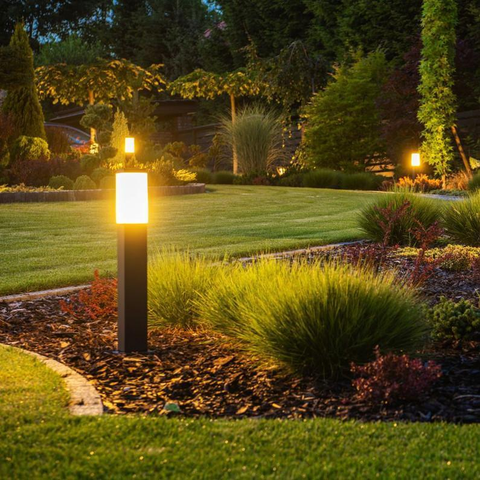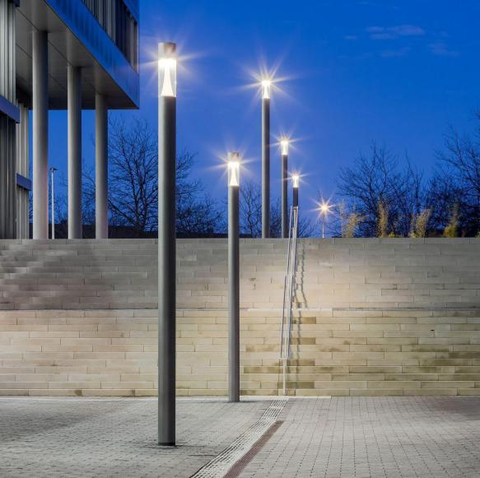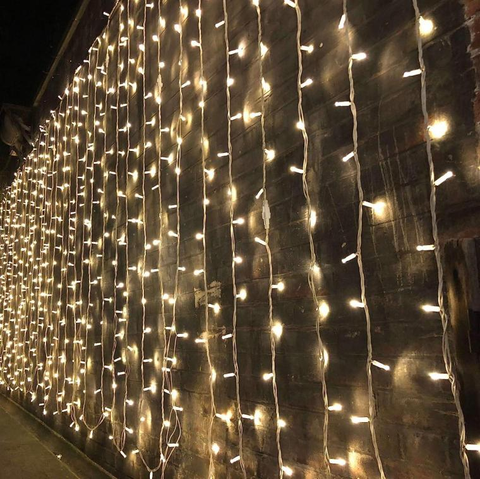Outdoor lighting brings many benefits, like making your space safer, more secure, and extra beautiful. Depending on what you aim to achieve with your lighting, there are numerous outdoor lighting fixtures to consider
Using fixtures rated explicitly for outdoor use with proper waterproofing is essential to avoid electrical hazards caused by exposure to moisture, and incorporating Ground Fault Circuit Interrupters (GFCIs) in the electrical circuit adds an extra layer of protection against shocks in wet environments as well as following manufacturer instructions and local building codes ensures proper installation and operation of the lighting system.
Explore this guide on outdoor lighting to discover the various types of lighting systems available, their applications, and essential installation tips. Whether you're considering outdoor light columns, lanterns, lamps, string lights, ceiling lights, or landscape lighting, this resource provides valuable insights into creating a well-lit and visually appealing outdoor space.
What is an Outdoor Light Column?
An outdoor light column is a tall, standalone lighting fixture commonly found outdoors, illuminating pathways, driveways, or garden areas. Resembling a slender column or pillar, these fixtures typically include one or multiple light sources positioned at the top and are crafted to harmonize with outdoor surroundings.
Outdoor light columns offer a versatile and aesthetically pleasing lighting solution for various outdoor spaces. With their ability to be used in settings such as pathways, driveways, gardens, and entranceways, these fixtures provide functional illumination while seamlessly blending into the landscape.
Where are Outdoor Light Columns Used?
Pathways and Walkways
Gardens
• Entranceways
• Outdoor Living Spaces (such as patios, decks, and terraces)
Tips for Outdoor Light Column Installation:
• Carefully plan the placement of the lighting columns to provide adequate illumination.
• Clear the installation area of any obstructions, debris, or vegetation.
• Ensure the foundation or base of the lighting column is securely anchored to the ground.
• If the lighting column requires electrical wiring, ensure a qualified electrician installs it.
• Before installing, test the lights to ensure they function correctly.
• Use appropriate personal protective equipment and turn off power sources.
What are Outdoor Lantern & Lamps?
Outdoor lanterns and lamps are designed to emit ambient or task lighting and create a warm and inviting atmosphereas one of best outdoor lights. They are available in different voltage options, such as line or low voltage, with wattage varying based on the size and type of lantern.
On the other hand, outdoor lamps come in freestanding or portable designs, offering versatility in placement and usage. These fixtures utilize different light sources, including incandescent, fluorescent, or LED bulbs, each affecting brightness and energy efficiency.
Where are Outdoor Lamps and Lanterns Used?
• Residential Neighborhoods
• Doorways of homes, businesses, and public buildings
• Outdoor dining spaces
• Driveways and Parking areas
• Public parks
Tips for outdoor lantern and lamp installation:
• Decide where to install the lanterns or lamps.
• Consider the location of power sources and underground utilities to avoid potential hazards.
• If wiring is not feasible or convenient, consider solar-powered lanterns or lamps.
• Use appropriate mounting hardware to ensure the fixtures are level and stable.
• Space the fixtures evenly to provide uniform lighting coverage.
What are String lights?
String lights are small electric lights on a wire, and small electric lights on a wire, string, or cable used as decoration. String lights have a distinctive capability to create a cozy, relaxed ambiance and gentle glow in your outdoor area, adding a decorative touch to your decor regardless of the season.
Where are string lights used?
• Outdoor Structures such as fences
• Outdoor retail spaces, restaurants, bars, and commercial spaces
Tips for String Light Installation:
• Measure the area where you'll hang the lights to ensure you have enough string to cover the distance.
• Use nails or hooks to attach the lights securely. Make sure to position them correctly based on the length of the string.
• Once the fixtures are in place, hang the lights along them, ensuring they're evenly spaced and secure.
• Finally, plug in the lights.
What are Outdoor Ceiling Lights?
Outdoor ceiling lights, also known as outdoor flush mount lights or outdoor overhead lights, are fixtures designed to be mounted flush against the ceiling of outdoor spaces such as porches, patios, or entryways.
Where are Ceiling Lights used?
• Outdoor lighting in stairwells
• Front door
• Entryways and foyers
• Garages and Carports
• Outdoor Walkways and Hallways
Tips for Outdoor Ceiling Light Installation:
• Choosing the suitable material and protection class.
• The ceiling light you install outdoors must have a protection rating of at least IP4.
• Choose a suitable outdoor luminaire based on the desired installation location.
What is Landscape lighting?
Landscape lighting, also known as garden lighting, involves the use of outdoor illumination in both private gardens and public landscapes. Its purposes include enhancing safety, improving nighttime aesthetics, increasing accessibility, enhancing security, facilitating recreation and sports, and enabling social and event activities.
Where are landscape lights used?
• Boundary and Property Lines
• Seating areas
• Public landscapes
• Front of the house
Tips for Landscape lighting installation:
• Physically indicate the location of any existing cable or irrigation lines.
• Clear a path for your wire runs and place your fixtures
• Install your low-voltage transformer.
• Connect fixtures
• Once connections are made, you can test the system by splicing lead wires to main runs.

Ensuring proper power sources, choosing fixtures rated for outdoor use, and following installation guidelines are essential steps to achieve a well-lit and visually appealing outdoor space.
Choosing the Right Outdoor Lighting
Begin by outlining your objectives when selecting outdoor lighting fixtures. Fixtures intended for safety and security differ from those intended to accentuate architectural elements. Understanding your desired lighting goals will guide you in choosing the appropriate fixtures to fulfill those objectives.
|
Objective |
Application Type |
Best Fixtures |
|
Create Focal Points |
Entrances, Patios |
Lamps |
|
Highlight Landscaping |
Trees, Bushes |
Column Lights |
|
Improve Safety |
Driveways, Stairs |
Outdoor Ceiling Lights |
|
Illuminate Pathways |
Walkways, Gardens |
Lantern Lights |
Powering Outdoor Lights
The operation of outdoor lights is contingent on the power sources available and the frequency of use.
Low voltage lighting, which runs at 12 volts, provides energy efficiency and ease of installation. In contrast, line voltage lighting, which operates at 120 volts, requires electrical conduits for outdoor use, making it appropriate for high-intensity lighting needs like floodlights. Solar-powered fixtures, which don’t require any wiring, depend on sufficient natural light to function and are simple to install. This makes them a perfect option for locations without easy access to electrical power sources.
When contemplating outdoor lighting or any form of lighting for your premises, there are numerous aspects to take into account.






